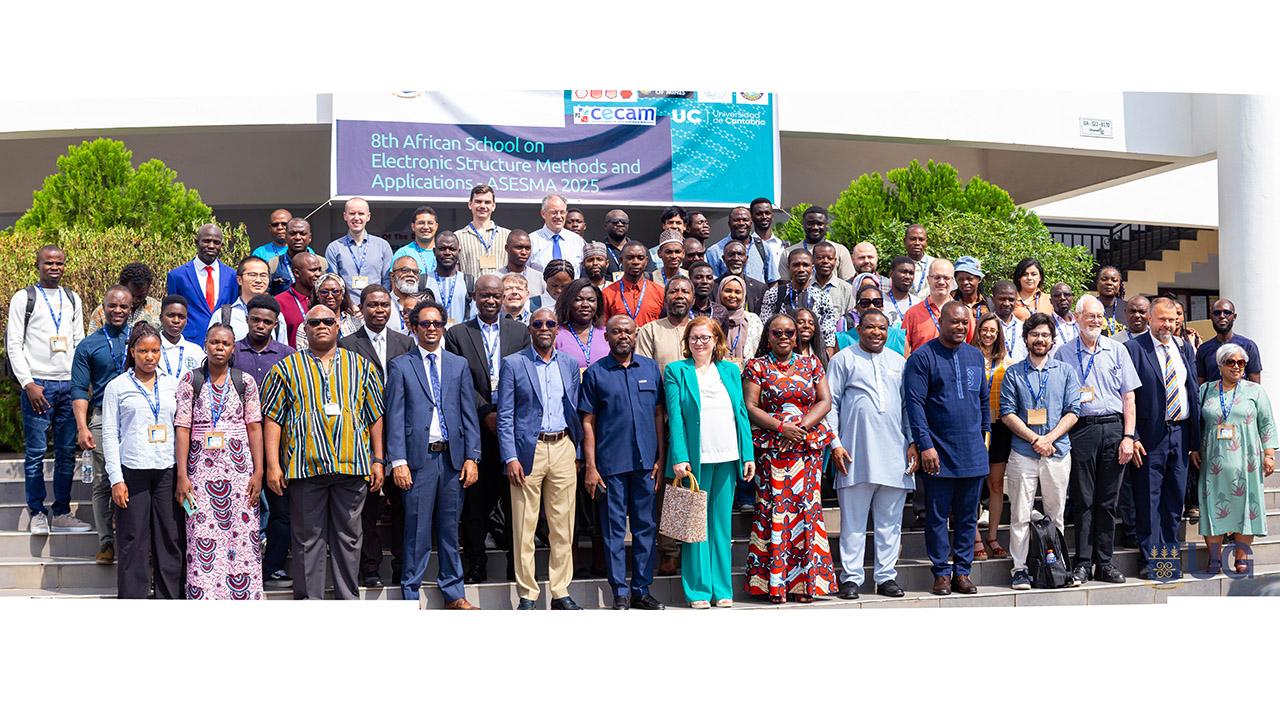
When G. Gebreyesus Hagoss joined the African School for Electronic Structure Methods and Applications (ASESMA) for the first time, he came from a completely different physics background. “For me, the principle was always straight. Science is about community. So I joined ASESMA in 2015 looking for a community.”
ASESMA is a biannual summer school that has been taking place since 2008, with ICTP’s Sandro Scandolo among its founders. It has, since then, run with the support of ICTP, the International Union of Pure and Applied Physics (IUPAP), and many other institutions and associations all over the world. It combines lectures on the theoretical aspects of condensed matter physics, in particular electronic structure, with tutorials on the computational aspects of the subject. “One of the most valuable aspects of ASESMA was the structured and focused nature of the program. Many people entering computational work without such guidance often struggle to figure out what’s relevant, but I felt privileged to have had that clarity from the start,” said Diana Keya, a student of the School.
The lecturers have included luminaries in the field, like Richard Martin and Mark Casida, both of whom have made fundamental contributions to the methods that are now taught in the school. Over the years, it has taken place in different countries, acting as a huge networking opportunity for the African community of physicists. “People were all working in their own corners, but ASESMA built a platform to bring them all together, to get to know each other, to understand what others are doing,” said Hagoss, who was an associate at ICTP from 2018 to 2023.
In 2025, the School took place at the University of Ghana, organized by Hagoss together with Nana Ama Browne Klutse, chair of the physics department and head of the Ghanian Environmental Protection Agency, and Martin Egblewogbe, a researcher at the department. Hagoss, who joined the executive committee of the School after his first attendance, said that the 2025 edition was different from before. “As a committee we said, why don’t we run two parallel schools? A basic one, for newcomers and early career scientists, and an advanced one, for professors and lecturers.” This way, ASESMA could aim to both connect established African researchers with newcomers, and to strengthen existing connections among physicists all over the continent.
The new format was a success. “It created this environment that was full of energy, multi-dimensional, building connections between professors and students, between African professors, between experts from Africa and the rest of the world,” explained Hagoss. The School ran from early morning to the evening, including a variety of icebreaking activities and sessions on mentoring, gender diversity, and paper writing. The program was organized with a close eye on building connections between the two parallel schools, with joint activities to bring together the participants of the two parallel sessions. “Meeting female scientists like Shobhana Narasimhan, who have made such impactful contributions to science, gave me a clear vision of what’s possible. I truly believe I can grow into that kind of role, and ASESMA gave me the confidence to pursue that path,” commented Keya.
The School had 51 participants from 17 African countries, and teachers, mentors and tutors from four different continents. The participants were in large part funded by the sponsors of ASESMA, including ICTP, IUPAP, the University of Ghana, and many others. This edition of the school also profited from an extraordinary, anonymous donation by a physics professor from the U.S.A. The opening ceremony was attended by more than 100 people. It featured many representatives from the Ghanian government and UNESCO, together with the Italian ambassador to Ghana, Laura Ranalli. The ceremony included a talk from ICTP’s Nicola Seriani, current chair of the Executive Committee of ASESMA, and an address from the Vice-Chancellor of the University of Ghana, Nana Aba Appiah Amfo.
Over the years, a variety of parallel activities has blossomed from ASESMA, strengthening ties between experts in electronic structure in Africa and all over the world: a notable example is ASESMANET, the network supported by the External Activities Unit of the ICTP, as well as by CECAM, Psi-k, and NCCR-MARVEL, which funds exchanges, research visits, and conference participation.
The 2025 edition of the school once again had a strong impact on the condensed matter community. “At the end of the school, you will see that the participants are all very close friends,” concluded Hagoss.
















